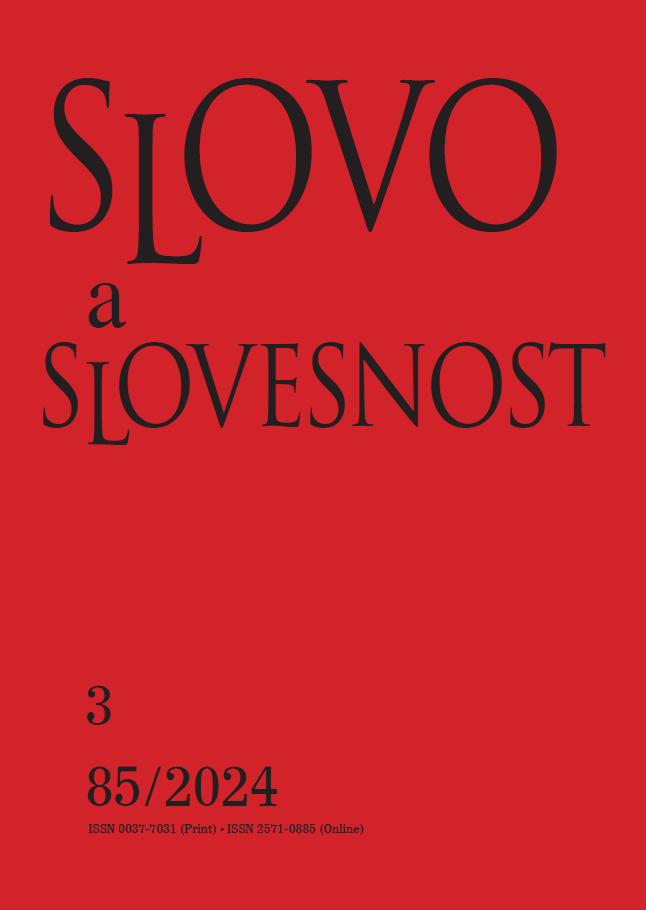Kvantitativněonomastická analýza Haškova Švejka a jeho tří parafrází
A quantitative onomastic analysis of Jaroslav Hašek’s Švejk and its three paraphrases
Author(s): Jaroslav David, Michal Místecký, Jana Davidová GlogarováSubject(s): Language and Literature Studies, Applied Linguistics, Studies of Literature, Historical Linguistics, Comparative Linguistics, Czech Literature, Theory of Literature
Published by: AV ČR - Akademie věd České republiky - Ústav pro jazyk český
Keywords: text analysis; quantitative linguistics; onomastics; literary onomastics; personal names; thematic concentration; collocation analysis
Summary/Abstract: This paper is a quantitative onomastic analysis of four works featuring the literary figure of Švejk. These are the original novel by Jaroslav Hašek, two retellings of the story from the period of WWII (1941 and 1945), and a 1970s–80s version by Martin Petiška, who moved the story to Czechoslovakia after the 1948 Communist coup. The analysis relies on the thematic concentration of text (with an emphasis on the role of proper nouns as thematic words) and collocation analysis of the proper noun ‘Švejk’. Its aim is twofold: first, to determine whether there are quantitatively detectable differences between the original work and its paraphrases concerning the use of proper names; and second, to determine whether there is a difference between the paraphrases and the original as regards the literary figure of Švejk. The analysis shows that the paraphrases reduce the text-type richness of the original, while maintaining Švejk as the protagonist. The paraphrases employ a popular interpretation of the main character (Švejk as a “smart idiot”), leaving aside other aspects of Hašek’s multi-layered novel. Partial shifts in the portrayal of the main character are related to his intellectualization or increased emotionality.
Journal: Slovo a slovesnost
- Issue Year: 85/2024
- Issue No: 3
- Page Range: 199-216
- Page Count: 18
- Language: Czech

